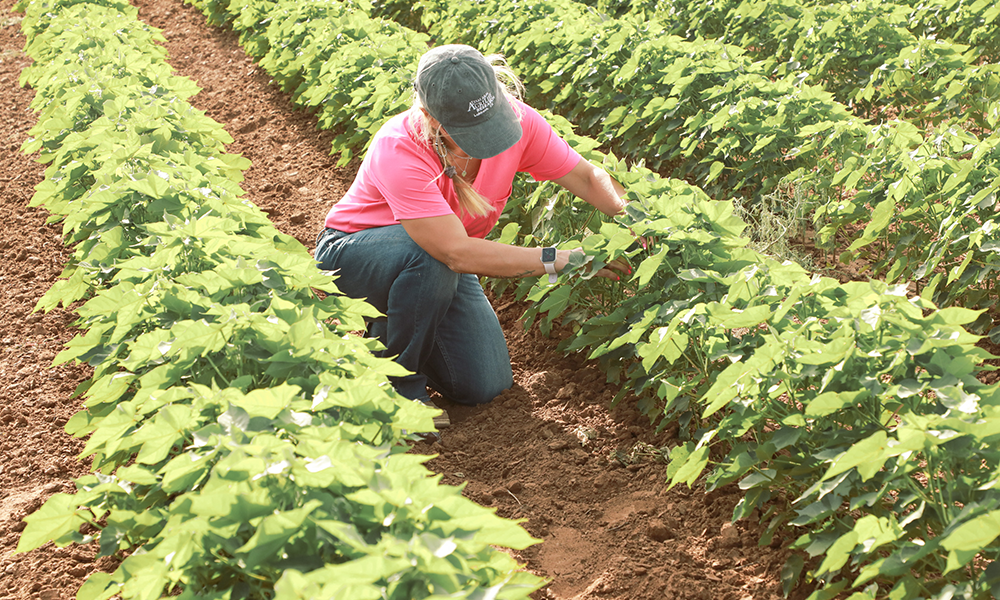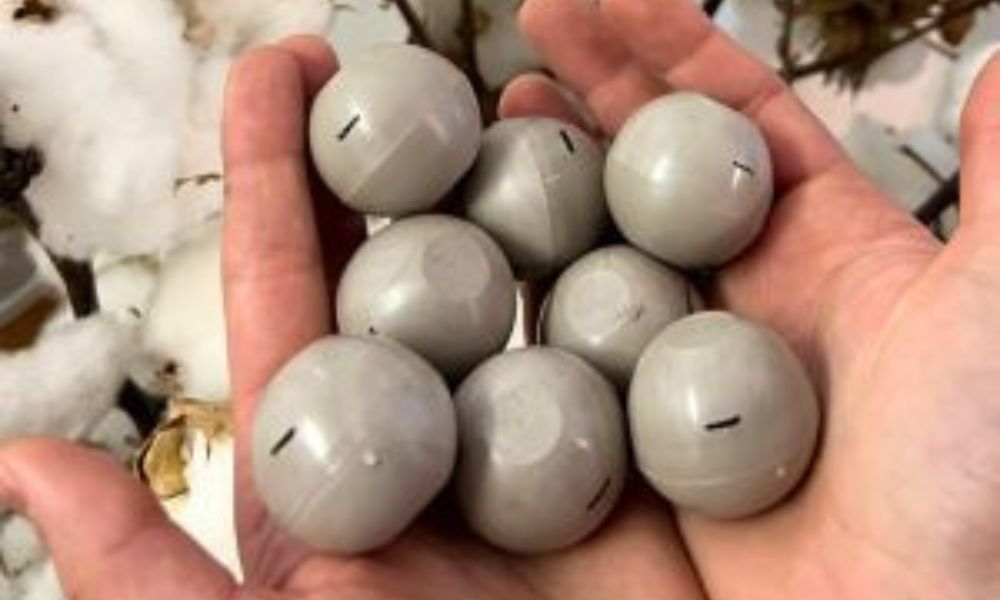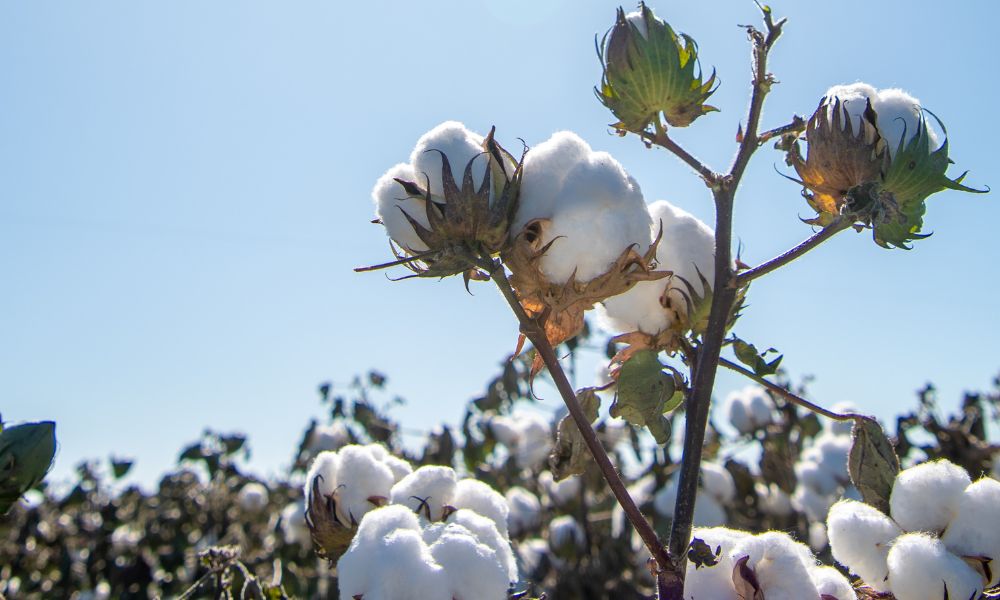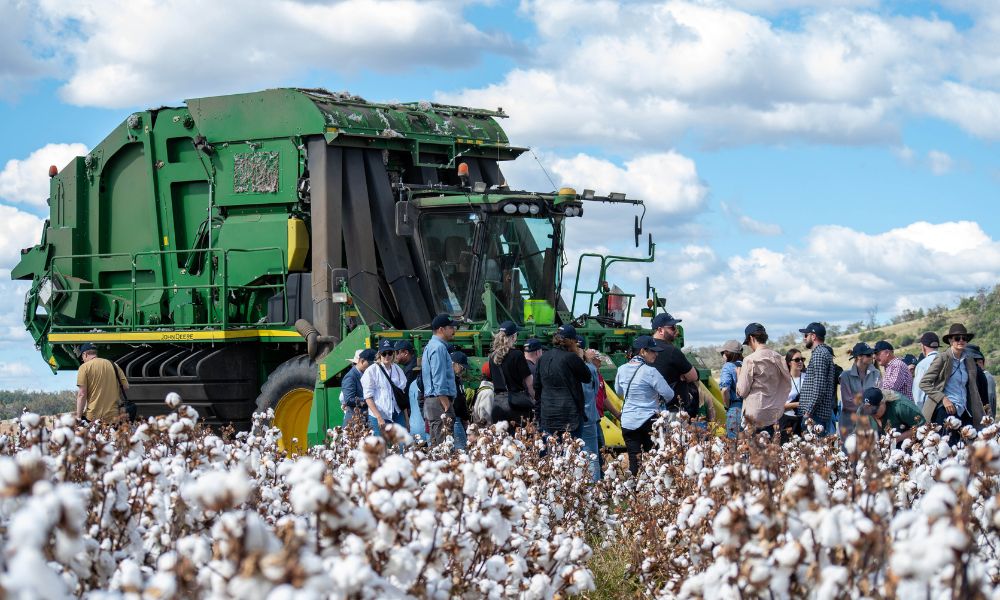Sustainable Cotton Insect Management
September 28, 2023
Dr. Sally Taylor describes U.S. cotton’s approach to insect management research and continuous improvement
 In the late summer heat, cotton plants across the U.S. hit peak blooms and develop bolls. But about the time that blossoms are peaking, so are insect populations. Some of those insects are beneficial; others can cause serious crop damage. “This is our buggiest time of year,” explains Dr. Sally Taylor, director of entomology research at Cotton Incorporated. “Growers want to be thinking ahead to the harvest, but they’ve got to deal with this first. The questions growers ask extension specialists around this time are mostly about bugs and when the crop is safe from insect damage.”
In the late summer heat, cotton plants across the U.S. hit peak blooms and develop bolls. But about the time that blossoms are peaking, so are insect populations. Some of those insects are beneficial; others can cause serious crop damage. “This is our buggiest time of year,” explains Dr. Sally Taylor, director of entomology research at Cotton Incorporated. “Growers want to be thinking ahead to the harvest, but they’ve got to deal with this first. The questions growers ask extension specialists around this time are mostly about bugs and when the crop is safe from insect damage.”
Cotton Incorporated supports insect management research in each cotton-growing state and across growing regions. Taylor’s role is to ensure that these lab and field research programs get the funding they need — and that state outreach and Extension programs have the resources to successfully disseminate information to growers. “We want to generate knowledge that gets to the farm,” says Taylor. A former Extension specialist herself, Taylor says that “75% of the job is outreach to farmers and sharing insights with fellow researchers.”

The interconnected landscape of insect management
“It’s unusual to have a bug that only lives in one state,” Taylor says. “This is actually fortunate, because it allows us to collaborate so well across the Cotton Belt.” Collaboration in insect management isn’t isolated to entomologists, either.
“Cotton Incorporated funds and facilitates projects that are multi-disciplinary, making sure that we aren’t doing research in isolation,” Taylor says. This is critical because a change in one farming practice — for example, switching tillage practices — could affect insect populations along with the expected changes in soil carbon and water retention. Some pest control methods help enable sustainable practices; inversely, if a cotton crop is damaged by insects, the plants may need more fertilizer or irrigation to be productive.
“Everything is connected,” Taylor reiterates.
The need for integrated pest management
Effective insect management directly and indirectly influences cotton’s sustainability — in terms of environmental impacts and the economic factors of crop yield and grower profitability. It’s too important to address from only one direction; instead, researchers and growers turn to integrated pest management (IPM) to approach cotton pest management from multiple angles.
“‘Integrated’ means IPM encompasses the entire suite of activities that can be used, from cotton variety selection, to how you plant the seed, to row spacing, to conserving beneficial insects to when you terminate your cover crops,” Taylor says. IPM methods help growers determine if, when and where they need to use pesticides. “We all prefer to manage pests in the absence of pesticides.” IPM helps make that a possibility.
 “We’re also more prophylactically managing bugs,” Taylor says. “‘Remedial’ is spraying bugs that are already in your field. ‘Prophylactic’ is anticipating the risk.” Systematically scouting fields for early signs of pests’ presence is one way to anticipate risk. Taylor previously researched better ways to scout for plant bugs on Virginia cotton farms. “We looked at how farmers can use their resources in smart ways to scout their fields more efficiently. It saves them time, money, and worry. We were using samples from the fields, and then sophisticated modeling and statistical software to get better at predicting risks and interpreting the findings from the fields so we could make recommendations.”
“We’re also more prophylactically managing bugs,” Taylor says. “‘Remedial’ is spraying bugs that are already in your field. ‘Prophylactic’ is anticipating the risk.” Systematically scouting fields for early signs of pests’ presence is one way to anticipate risk. Taylor previously researched better ways to scout for plant bugs on Virginia cotton farms. “We looked at how farmers can use their resources in smart ways to scout their fields more efficiently. It saves them time, money, and worry. We were using samples from the fields, and then sophisticated modeling and statistical software to get better at predicting risks and interpreting the findings from the fields so we could make recommendations.”
Seed-applied insecticides, cotton variety selection, and biotechnology are other highly impactful ways to “prophylactically” manage insect-related risk. Transgenic cotton varieties produce their own resistance to particular insects or tolerance to herbicides. They have proven particularly effective in helping growers reduce cotton insecticide applications. Researchers and growers across cotton-growing states regularly partner with companies to evaluate and improve the effectiveness of transgenic cotton varieties.

USDA ARS researcher Seth Dorman conducts a plant bug scouting clinic for Virginia cotton growers.
“The science is always evolving, especially when it comes to plant genetics,” Taylor says. “Pesticides have become so specific, too — you can target specific pest species. The technology has come so far to allow us to narrow in on specific problems. That enables us to be sustainable.”
Targeted methods lead to sustainable results
“Compared to several decades ago, we use insecticides so sparingly and judiciously now. We used to measure insecticides in pounds per acre — now we apply milligrams per acre,” Taylor says.
In fact, U.S. cotton growers use approximately 50% fewer insecticide applications compared to the late 1980s. Cotton researchers and growers pair this achievement with the understanding that they need to continue improving knowledge of insect control practices. For example, Taylor mentions how climate change is causing warmer autumns in some cotton-growing regions — which means that best practices for effectively managing insects at this time of year continue to evolve, too.
“I’m so proud of the way our industry has addressed the challenges of insect control,” Taylor says. Effective pest management benefits grower profitability and the world’s supply of quality fiber. The entire cotton supply chain has good reasons to support growers as they implement sustainable pest management practices — and continue to improve.
Learn more about IPM and the U.S. cotton industry’s insect management research.















Recent Comments